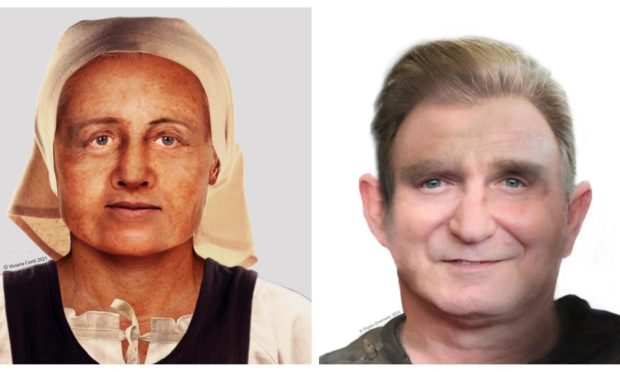Two graduates from Dundee University have used digital technology to identify the faces of people living in Leith up to 700 years ago.
Forensic artists Vivana Conti and Elysia Greenway used hi-tech software to reconstruct the faces of human remains uncovered during an excavation of a graveyard in Leith.
The remains date back from between the 14th and 17th centuries.
The Dundee graduates used special 3D scanners to build up digital versions of the skulls discovered and from there created lifelike representations of the former Leith residents.
The pair worked closely with project sub-contractors GUARD Archaeology. The work was undertaken as part of an ongoing internship with the City of Edinburgh Council archaeologist service.
The pictures depict a man and a woman aged between 35 and 50.
Early forensic analysis suggests the woman may have suffered from nutritional deficiencies.
Lynn Morrison, from Dundee University’s Centre for Anatomy and Human Identification, part of the School of Science and Engineering, said: “Elysia and Viviana have done an excellent job reconstructing the faces of these individuals. This internship has given them a great opportunity to develop the skills learnt on the course and gain some valuable experience in the field.
“I am delighted to see how well they are doing.”
John Lawson, City of Edinburgh Council archaeologist, said: “These fantastic reconstructions help us connect directly with our forebearers.
“Often, we as archaeologists just see the physical remains but the work undertaken by Dundee University’s forensic artists helps put the flesh, so to speak, back on to these remains and by doing so I feel brings them closer to us today.”
Previous investigations of the site showed that the South Leith Parish Church graveyard extended across Constitution Street in the medieval period and that some graves survived beneath the road surface.
The team of archaeologists, who were working to remove any human remains that could be affected by the tram works, exhumed more than 360 bodies dating from between 1300 and 1650, as well as finding the apparent remnants of the original medieval graveyard wall.
The remains are now subject to examination and analysis that will reveal information on the origins, health, diseases and diet of the people of medieval Leith.
Viviana and Elysia have recorded vlogs for the Trams to Newhaven YouTube account that explain their process.





